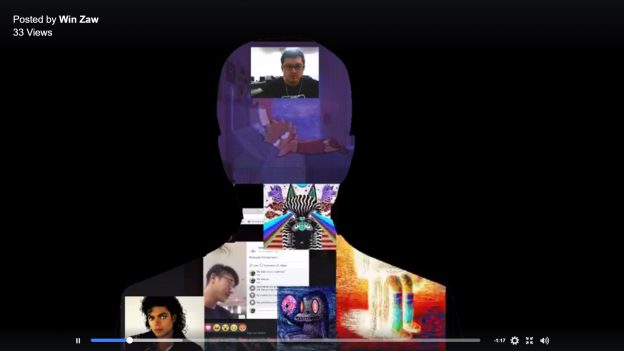“I’m trying to prove the point that no matter what you look like, you’re still just as interesting as people on the TV or in the magazines.”
During the interview with David Letterman, Jenny brought up something interesting: the fact that there is a whole lot of things to watch on television. The fact that users still tune in to watch someone else’s apartment tells us a little bit more about our voyeuristic tendencies, and our curiosity to consume media of this sort, even though there isn’t really anything inherently interesting on an average day.
From a personal perspective, there isn’t a lot that I do outside of my computer when I am at home, so if i were to broadcast myself, i would tend to do it via OBS or Facebook live.
This experiment also reminded me of a similar project that i saw a couple of years ago, in which a man would take a portrait photographs of himself over a period of 6 years. I dabbled in this idea myself, and even tried out some self portrait stop motion animation just to see how effective it was. I preferred this project as most of the photographs exist without context, something that I’d much rather do in comparison to streaming my house. In fact, Jennifer’s early streams were simply black and white images uploaded in 3 minute increments.
I also believe that teaching internet etiquette and responsible internet use should be included as part of the curriculum as there have been instances of people getting into trouble online for something that was taken out of context. Pewdiepie had recently gotten into trouble for using the N word on one of his live streams. Although it was obvious that the word was uttered in the heat of the moment, the court of public opinion was unwilling to read between the lines, and was quick to grab the proverbial pitchfork. (here is his public apology).
There was another incident involving a Youtuber/ streamer by the username DSPgaming (there’s an encyclopedia dramatica page dedicated to this man). Basically, Phillip Burnell is a let’s player who streams himself playing video games. Unfortunately, during one of his streams, he somehow forgot to switch his camera off after the show, and proceeded to, shall we say, shine his saber. This act was caught on the stream, leading to his ridicule. Incidents like these are permanently on the public domain (Thanks to sites like the wayback machine), and although some like Phil are simply ridiculed, there are others who has had their reputations affected (Pewdiepie fiverr incident) and others who had been arrested (Amos Yee)
The rules of engagement in this scenario would be to play it cool and just “own it ” so to speak . The amazing atheist a.k.a. TJ kirk did it right by plainly admitting his transgressions when it was leaked online. However, Phillip on the other hand, did the exact opposite thing and tried to deny it awkwardly, leading to more ridicule.
In the case of Jennifer Ringley, she ran into a different set of problems. It all began when she had volunteered to do a striptease on the stream. This continued until she was hacked and sent death threats, telling her to “show more”. Thankfully, she was able to take control of the situation and laugh it off. I’m not sure if this generation of children will be as thick-skinned as she was.
In conclusion, I believe that in this age of moral indignation, self-righteousness and virtue signalling, streamers and other online personalities would have to be extra careful about what they say online, especially for streamers and those hosting podcasts, as the latter instances are almost always impromptu and unrehearsed.















